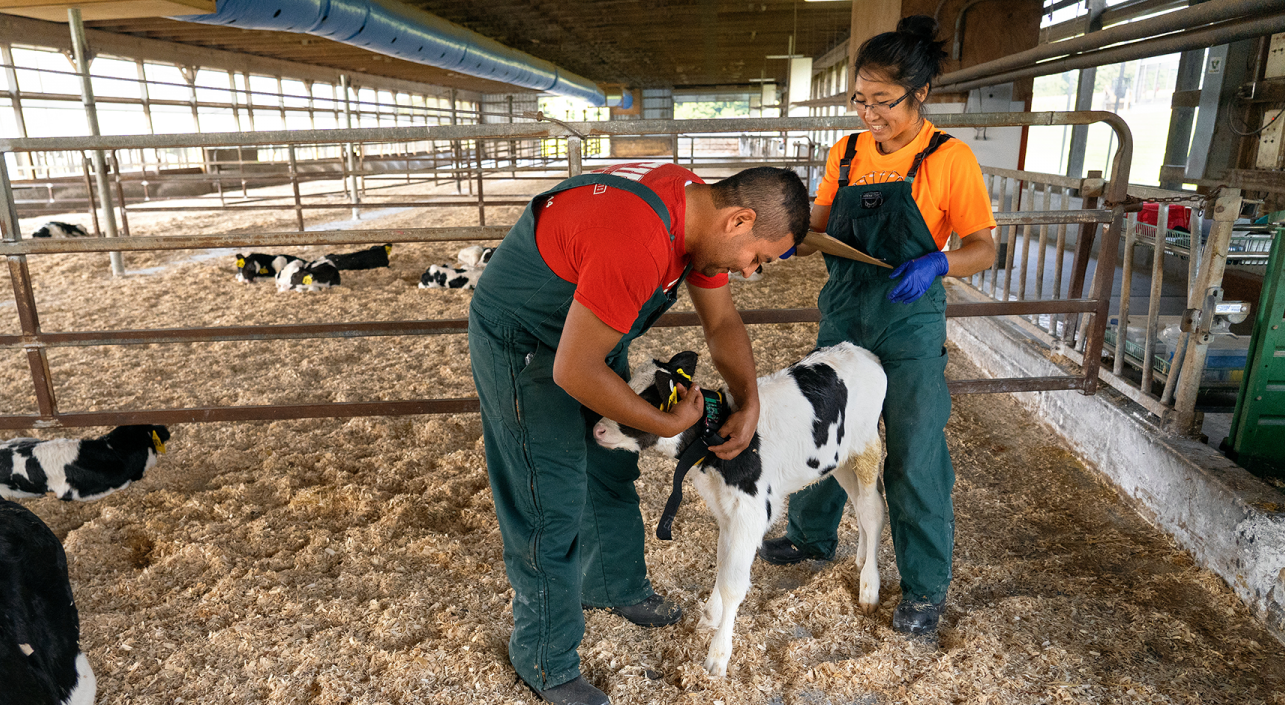Antibiotic Stewardship
American dairy farmers are committed to producing quality, safe and affordable milk and beef. Healthy animals are a source of safe food, and disease prevention keeps them healthy. When dairy cattle get sick or injured and treatment is necessary, farmers and veterinarians use antibiotics and other drugs prudently. All medications must be used appropriately under veterinary guidance to prevent residues from occurring in milk and dairy beef.
For more than 30 years, the U.S. dairy industry has focused educational efforts on the judicious use of antibiotics through the annual publication of a best practices manual. The manual is a resource to review antibiotics approved for dairy animals and is an educational tool for farm managers as they develop on-farm best management practices necessary to avoid milk and meat residues. Through participation in the National Dairy Farmers Assuring Responsible Management (FARM) Animal Care Program, over 99 percent of the U.S. milk supply comes from dairy farms that adhere these standards.

Our Position
NMPF supports the FARM Antibiotic Stewardship Program and its educational efforts to inform the public about the responsible use of antimicrobials in animal agriculture. NMPF opposes all federal, state and local legislative and regulatory initiatives that undermine national uniformity and the best scientific available in governing the responsible use of antibiotics.
Key Points
- For more than 30 years, the U.S. dairy industry has focused educational efforts on the judicious use of antibiotics through the annual publication of a best practices manual. The FARM Drug Residue and Prevention Manual is the primary educational tool for dairy farm managers throughout the country on the judicious and responsible use of antibiotics, including avoidance of drug residues in milk and meat.
- Since 2011, not a single retail-ready milk product has tested positive for traces of antibiotics. All milk is screened for antibiotics, and any load that tests positive for a drug residue is discarded and never sold.
- Only 1 out of 12,050 milk tankers tested positive for antibiotic residues last year, according to the 2021 National Milk Drug Residue Database. This data illustrates the continued long term national pattern of industry improvements in milk quality practices.





